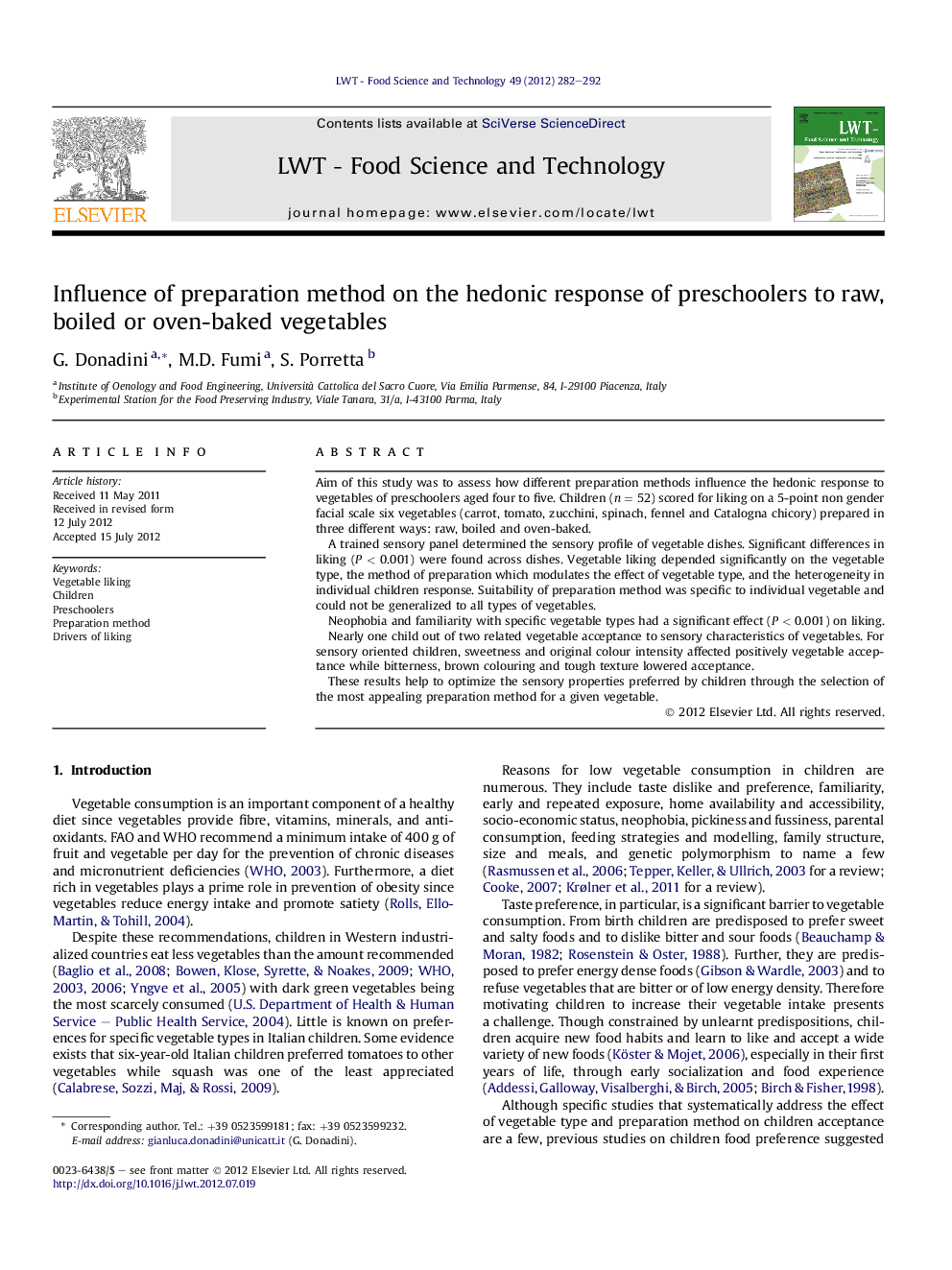| Article ID | Journal | Published Year | Pages | File Type |
|---|---|---|---|---|
| 4563981 | LWT - Food Science and Technology | 2012 | 11 Pages |
Aim of this study was to assess how different preparation methods influence the hedonic response to vegetables of preschoolers aged four to five. Children (n = 52) scored for liking on a 5-point non gender facial scale six vegetables (carrot, tomato, zucchini, spinach, fennel and Catalogna chicory) prepared in three different ways: raw, boiled and oven-baked.A trained sensory panel determined the sensory profile of vegetable dishes. Significant differences in liking (P < 0.001) were found across dishes. Vegetable liking depended significantly on the vegetable type, the method of preparation which modulates the effect of vegetable type, and the heterogeneity in individual children response. Suitability of preparation method was specific to individual vegetable and could not be generalized to all types of vegetables.Neophobia and familiarity with specific vegetable types had a significant effect (P < 0.001) on liking.Nearly one child out of two related vegetable acceptance to sensory characteristics of vegetables. For sensory oriented children, sweetness and original colour intensity affected positively vegetable acceptance while bitterness, brown colouring and tough texture lowered acceptance.These results help to optimize the sensory properties preferred by children through the selection of the most appealing preparation method for a given vegetable.
► Vegetable type and preparation method influence pre-schoolers vegetable acceptance. ► The effect of preparation method depends on vegetable type. ► Familiarity and neophobia affect vegetable liking. ► Nearly 50% of the children relate vegetable acceptance to sensory characteristics.
